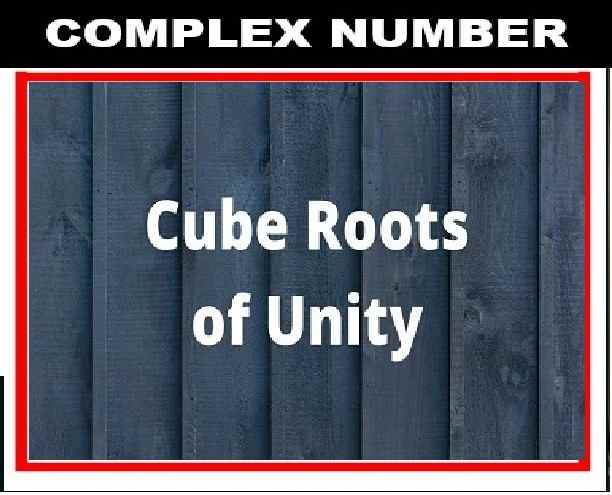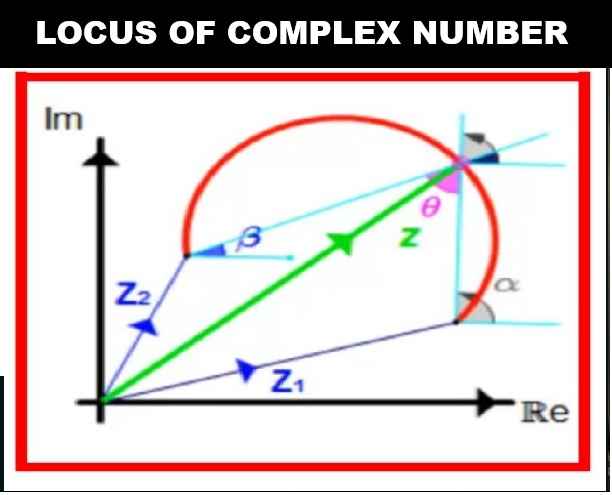Practical Chemistry Goyal Brother Solutions ICSE Class-9 Ch-9. We Provide Solutions of Chapter-9 Practical Chemistry Goyal Brother Prakashan ICSE Class-9 Ch-9. Visit official Website CISCE for detail information about ICSE Board Class-9.
Practical Chemistry Goyal Brother Solutions ICSE Class-9 Ch-9
| Board | ICSE |
| Publications | Goyal Brother Prakashan |
| Subject | Chemistry |
| Class | 9th |
| Writer | Dr. S.K. Aggarwal |
| Chapter-9 | Practical Chemistry |
| Topics | Solutions of Exercises-9 |
| Edition | for 2023-2024Academic Session |
Ch-9 Practical Chemistry Goyal Brother Prakashan ICSE Class-9 Chemistry Solutions Exercise
(Page- 165-167)
Questions 1. Identify the gases from the following observations:
(a) A colourless and odourless gas which is neutral towards litmus and relights glowing wooden splint.—oxygen
(b) A colourless gas which fumes strongly in air and has a sharp smell. It gives dense white fumes with a glass rod dipped in conc. HCl.—Ammonia
(c) A colourless and odourless gas, which extinguishes a burning wooden splint. It ums limewater milky. but has no action with potassium permanganate.—-CO2
(d) A colourless gas having a pungent and irritating smell, which turns blue litmus red. It gives dense white fumes when a glass rod dipped in ammonium hydroxide solution is held in it.— HCl.
(e) A colourless and odourless gas, which is neutral towards litmus. It explodes with a ‘pop” sound when a burning wooden splint is held near it.—Hydrogen gas (H2)
(f) A colourless gas having a suffocating smell. It turns limewater milky and potassium dichromate solution green.—-sulphur dioxide gas
(g) A greenish yellow gas having a pungent and suffocating smell. It turns moist blue litmus paper red and then bleaches it.—Chlorine (Cl2) gas
(h) A reddish brown gas having a pungent smell. It tums moist potassium iodide paper brown.– nitrogen dioxide gas
(i) A colourless gas having a rotten eggs like smell. It turns limewater milky and moist lead acetate paper silvery black.— Hydrogen sulphide (H2S)
(j) A colourless gas, which changes to steamy vapours on cooling. It forms colourless, tiny droplets of liquid which turn anhydrous copper sulphate blue and anhydrous cobalt chloride pink.—Water vapor ( H 2 O )
Questions 2. Give chemical test/tests to distinguish between the following gases:
(a) Ammonia and hydrogen chloride.
| Name of the test | Ammonia | Hydrogen chloride |
|---|---|---|
| Reaction with litmus | Ammonia gas turns moist red litmus paper blue as it is basic in nature. | Hydrogen chloride gas turns moist blue litmus paper red as it is acidic in nature. |
(b) Hydrogen chloride and hydrogen sulphide.
Hydrogen chloride gas gives thick white fumes of ammonium chloride when a glass rod dipped in ammonia solution is held near the vapour of the acid, whereas no white fumes are observed in case of hydrogen sulphide gas
(c) Hydrogen sulphide and carbon dioxide.
(d) Carbon dioxide and sulphur dioxide
Carbon dioxide gas has no effect on acidified KMnO4 or K2Cr2O7, but sulphur dioxide turns potassium permanganate from pink to colourless.
(e) Sulphur dioxide and chlorine.
Sulphur dioxide [SO2]: Moist blue litmus paper turns red. turns acidified potassium permanganate from pink to colourless.
(f) Chlorine and nitrogen dioxide.
Chlorine [Cl2]:
- Moist litmus [blue] turns red and gets bleached,
- Turns moist starch iodide paper blue black.
Nitrogen dioxide [NO2]:
- Turns blue litmus red.
- Displaces I2 from KI and turns potassium iodide paper brown.
(g) Hydrogen and oxygen.
Hydrogen burns with a pale blue flame when burned in the presence of oxygen.
Oxygen gas when passed through colourless Pyrogallol solution changes its colour to dark brown
(h) Oxygen and ammonia.
take a glowing splint and place it in a sample of gas, if it re-ignites the gas is oxygen.
adding dilute sodium hydroxide solution and gently heating. If ammonium ions are present, they will be converted to ammonia gas. Ammonia has a characteristic choking smell. It also turns damp red litmus paper or damp universal indicator paper blue.
Questions 3. The statements given below relate to the following substances when strongly heated. Identity the substances.
Substances:
(a) CuCO3
(b) ZnCO3
(c) Na2CO3.10HO2
(d) CuSO4.5H2O
(e) Cu(NO3)2.6H2O
(f) Pb(NO3)2
(g) Zn(NO3)2.6H2O
(h) (NH4) Cl
(i) I2
(h) (NH4)2Cr2O7
Statements:
(i) A white crystalline solid which on strong heating (i) swells (ii) gives of steamy vapour which condenses on the cooler parts of test tube (iii) melts (iv) the droplets of condensed vapour turn anhydrous copper sulphate blue.—(c) Na2CO3.10HO2
(ii) A blue crystalline solid which on strong heating (i) forms white powdery residue (ii) gives off steamy vapour which on cooling form droplets of a colourless liquid (iii) the residue tums blue on addition of few drops of water.—(d) CuSO4.5H2O
(iii) A white amorphous solid on strong heating () leaves behind a residue which is yellow which hot and white when cold (i) gives off a colourless gas which tuns limewater milky.–(b) ZnCO3
(iv) A bluish green crystalline solid on strong heating (i) leaves behind a black residue (i) gives a red brown gas (ii) a glowing splint bursts into flame when held in brown gas.—(e) Cu(NO3)2.6H2O
(v) A white crystalline, deliquescent solid which on strong heating (i) leaves behind a residue which is yellow when hot and white when cold (ii) gives off a reddish brown gas (iii) a glowing wooden splint bursts into flame when held n the brown gas. (g) Zn(NO3)2.6H2O
(vi) A light green amorphous solid which on strong heating (i) leaves behind a black residue (ii) gives off a colourless gas which turns limewater milky.—(a) CuCO3
(vii) A heavy white crystalline solid, which on strong heating (i) leaves behind a residue which is reddish brown when hot and yellow when cold (ii) gives off a reddish brown gas (iii) a glowing splint bursts into flame when held in the brown gas.—(f) Pb(NO3)2
(viii) A white crystalline solid which sublimes on heating to form dense white fumes. The dense white fumes condense on the cooler parts of the apparatus to form white powdery mass.–(h) (NH4) Cl
(ix) A greyish brown crystalline solid on strong heating sublimes to form violet fumes. The violet fumes condense on the cooler parts of the apparatus to form greyish brown crystals.–(i) I2
(x) An orange red crystalline solid on strong heating (i) swells many a times and leaves behind a greenish grey residue (ii) gives off steamy vapour which condense on the cooler parts of test tube to form colourless droplets of a liquid which turn anhydrous cobalt chloride pink (iii) gives off a colourless, colourless gas, which is neither combustible, nor does it supports combustion and does not turn limewater milky.–(h) (NH4)2Cr2O7
Questions 4. How will you distinguish between copper carbonate and copper nitrate by heating alone?
Answer : The precipitate turns white on cooling. Carbon dioxide can be detected by formation of white precipitate in lime water. Copper carbonate on dry heating yields two products namely, copper oxide and carbon dioxide. Copper nitrate is blue in color, which turns into black color of copper oxide
Questions 5. How will you distinguish between the following by flame test?
(a) Sodium sulphate and zinc sulphate.
(b) Potassium carbonate and calcium carbonate.
Answer :
(a) Use flame test to identify them zinc burns with blue-green to pale green color so zinc chloride burns with blue-green color
(b) Potassium carbonate gives lilac colour while Sodium chloride obtained yellow flame,
Questions 6. Write balanced equations when the following substances are heated strongly:
(a) Washing soda crystals–Na 2 CO 3 . 10 H 2 O ( s ) → heat Na 2 CO 3 ( s ) + 10 H 2 O ( g )
(b) Zinc carbonate–ZnCO 3 s → Heat ZnO s + CO 2 g
(c) Copper (II) sulphate pentahydrate–CuSO4•5H2O → CuSO4 + 5 H2O
(d) Copper (II) nitrate hexahydrate– 2Cu(NO3)2(6H2O)⟶Heat2CuO(s)+O2(g)+4NO2(g)+12H2O
(e) Copper (II) carbonate–C u C O 3 → C u O + C O 2 [ g ] CuCO_3→CuO+CO_2[g] CuCO3→CuO+CO2[g]
(f) Lead nitrate– 2Pb(NO3)2→2PbO+4NO2+O2.
(g) Zinc nitrate hexahydrate–2Zn(NO3)2(6H2O) → 2ZnO + 4NO2 + O2 +12H2O
(h) Ammonium dichromate–(NH4)2Cr2O7Heat→Cr2O3+4H2O+N2.
(i) Ammonium chloride–NH 4 Cl s → NH 3 g + HCl g
(j) Iodine I2(s)–2I (g)
Questions 7. Using dilute sulphuric acid only how will you distinguish between the following: State clearly the chemical reactions taking place and the tests for the gase2ous products.
(a) Magnesium carbonate and magnesium sulphide.
The dissolution reaction of magnesite in sulphuric acid solutions can be described by the following equation: MgCO3(s)+H2SO4(aq)→MgSO4(aq)+CO2(g)+H2O(l) , the gas CO2 turns lime water milky while magnesium sulphide not turn milky.
(b) Magnesium and lead.- when magnishium react with sulphuric acid then product hydrogen gas evolve which produce pop sound near flame while lead not
Mg ( s ) Magnesium + H 2 SO 4 ( aq ) Sulphuric acid → MgSO 4 ( aq ) Magnesium sulfate + H 2 ( g ) Hydrogen
Questions 8. A mixture consists of sand and common salt. Briefly describe the experimental procedure for calculating the percentage of sand.
Answer :To determine the percentage of sand, divide the weight of the sand by the weight of the combined salt and sand and multiple by 100.
— End of Practical Chemistry Goyal Brother Solutions ICSE Class-9 Ch-9 :–
Return to: ICSE Class-9 Chemistry Goyal Brothers Prakashan Solutions
Thanks


